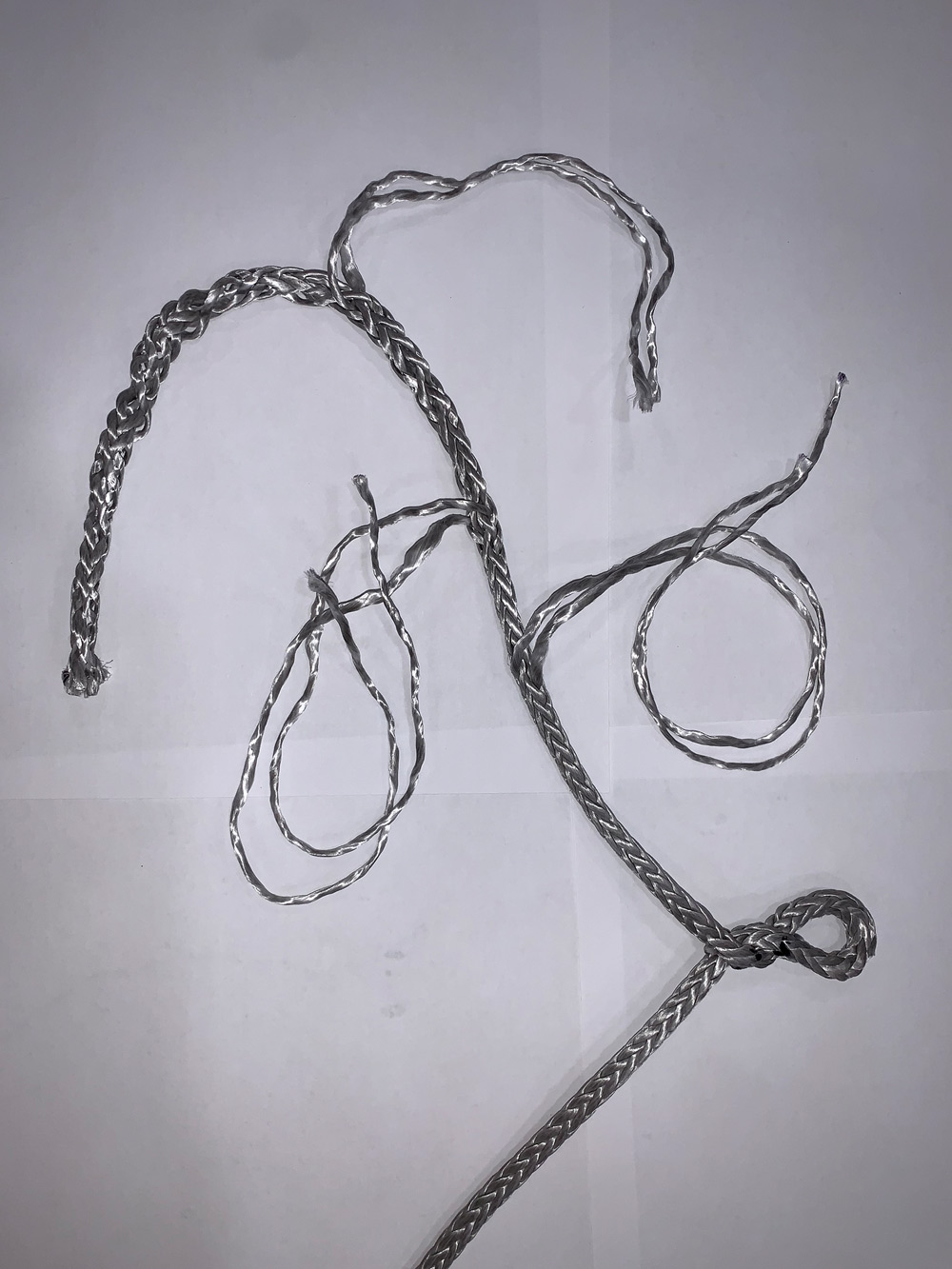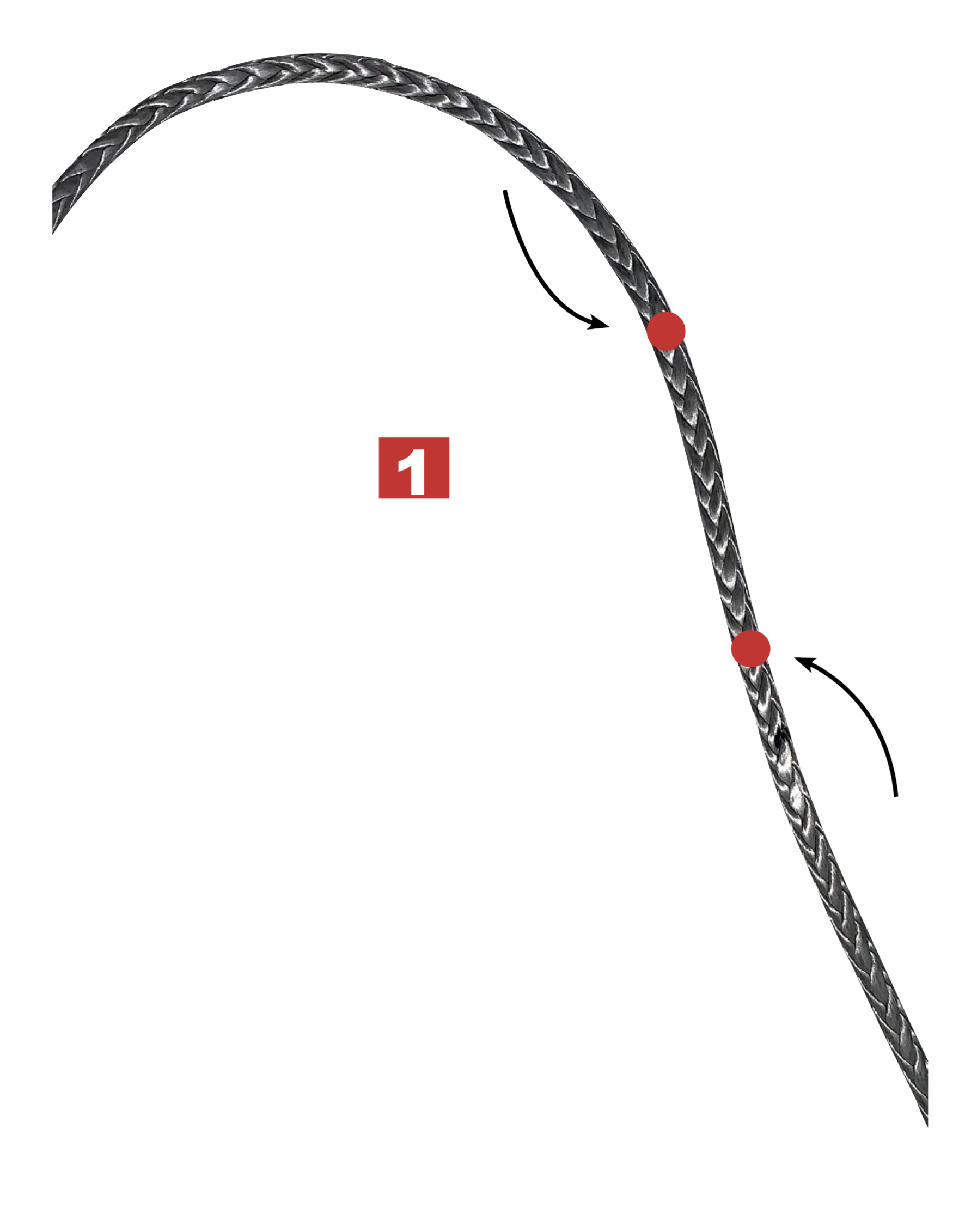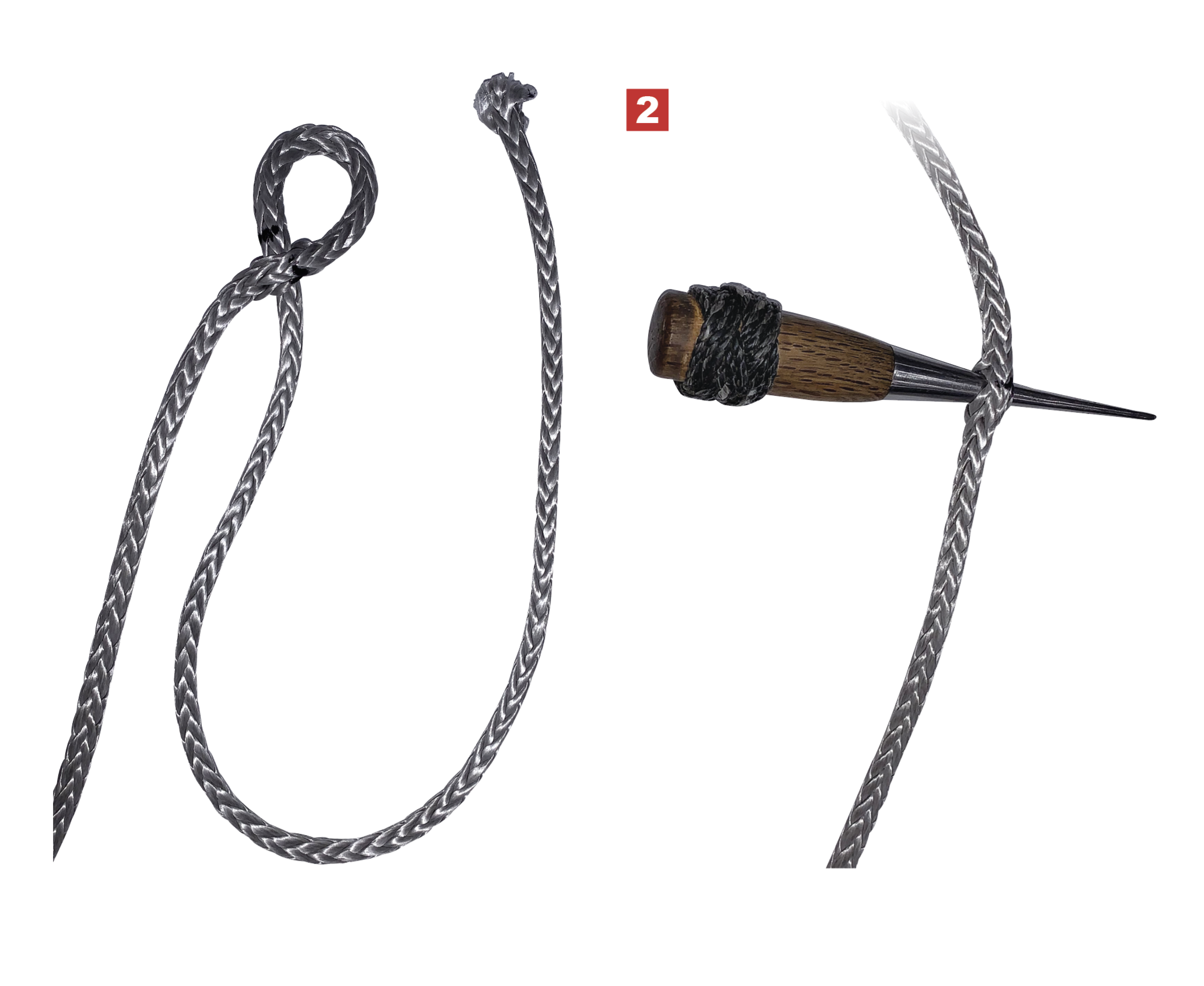Splicing Dyneema
Embrace the splice because knots aren’t best on the extremely strong fiber Dyneema
Dyneema is seriously strong, but a very slippery fiber. The slipperiness means that you can’t efficiently use knots to terminate it. Even the best knot will degrade the ultimate strength of the rope by 60% or more. The knot will look OK but slip and fail under load. Dyneema must be spliced to maintain its strength.

Splicing is a great foundational skill. A simple eye splice will let you attach Dyneema to a piece of hardware, but with a bit more related skill, you can make a host of other cordage tools. Even the very fashionable and expensive soft shackles will be within reach.
You will need a few tools to splice: a marker, tape measure, scissors, a tucking tool and a small awl. The tucking tool can be a traditional tubular fid in a diameter to match the rope, but I prefer the splicing wand created by Brion Toss Yacht Riggers (www.briontoss.com). Dyneema requires a 72-diameter tail bury—burying the tail a length equal to 72 times the diameter of the line—for adequate strength. To make the instructions general purpose and easy to remember the dimensions are all relative to rope diameter. For instance, if we do a 72-diameter bury in 1/4-inch rope, this is 72 multiplied by a .25 inches, or 18 inches. Refer to the table for common rope diameters, but any bury length can be calculated as needed.



Comments